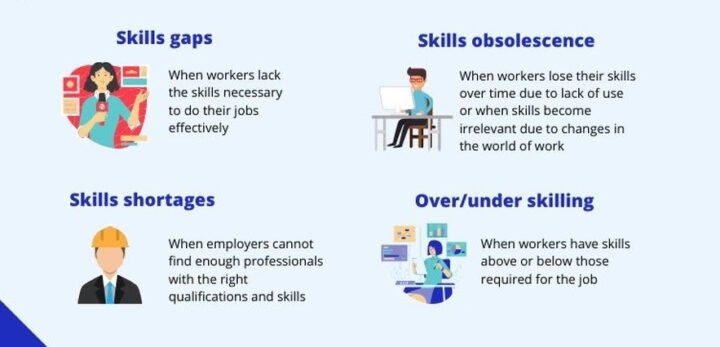How to Mitigate Resource Constraints in Project Management?

Irrespective of the size and complexity of the project, identifying the resource constraints at an early stage is essential for successful delivery. These include resource shortages, skill gaps, the sudden absence of employees, and more. If not managed well, this will negatively impact the project resulting in delays or failure.
Therefore, managers need to address these issues strategically and formulate a mitigation and control plan in the planning stage. It will ensure successful project completion and delivery.
This blog discusses some significant resource constraints in project management and the strategies that can be used to overcome the same.
First, let’s look at the basics:
1. What are resource constraints?
Resource constraint is a limitation or risk related to the resources that will have a negative impact on projects and the organization. If not managed properly, it will affect the project scope, timeline, and budget resulting in a sudden project halt or even failure.
Some resource constraints in project management:
1.1 Skill mismatch or partial alignment

One of the significant constraints is when the available resources do not have the requisite skillset or when their competencies partially align with the demand. The allocation of these resources reduces the project quality and may cause delays.
1.2 Unavailability of niche skilled critical resource
Multifaceted projects might require niche skilled resources to fulfill a project demand. Often, these resources are unavailable or already booked on other projects making it challenging to meet the resource requirements. In this case, even resorting to last-minute hiring can lead to wrongful hiring and affect project quality.
1.3 Resource shortages for projects

Another major resource constraint is the shortage of resources for any pipeline projects. This usually happens when resources are already allocated to projects and cannot commit to a new project. It leads to last-minute firefighting for resources, and managers end up hiring high-cost resources, leading to budget spikes.
1.4 Increase in benched resources
Resources are often released from the projects when significant tasks or activities are completed. This sudden ramp-down can increase the bench size. Due to budgetary constraints, last-minute project cancellations or project halts can also increase benched resources. Here, the organization cannot leverage the resources’ talent, leading to financial loss.
1.5 Unplanned absence/attrition
When employees take unplanned leaves or resign unexpectedly due to personal or professional reasons, it drastically affects a project. Also, the lack of suitable replacement can cause unnecessary delays and budget overruns. As a result, managers might overburden other resources with the same task for project completion. It will cause overutilization and employee burnout affecting resources productivity.
These are some primary resource constraints encountered by managers in an organization. Now let us look at some ways to mitigate them.
2. Techniques to combat various resource constraints
As mentioned, resource constraints negatively affect a project, resulting in its failure. Therefore, it is necessary to implement techniques to prevent constraints from arising. Below are some ways to do the same.
2.1 Conduct upskilling and on-the-job training

According to Gartner, one of the significant resource constraints is the increasing skills gap in the organization.
The widening skill gap in an organization drastically affects project management. While hiring skilled resources can be an option, lack of proper planning can result in the last-minute hiring of a high-cost resource.
Therefore, managers need to look into the resource pool and identify whether the available resources have the required skillset. If there is a skill mismatch or partial alignment, they can initiate upskilling programs in advance. In addition, they can also provide on-the-job training or shadowing opportunities to broaden their employees’ skillset.
2.2 Implement out rotation-backfill technique
The unavailability of niche skilled critical resources can affect the project quality. Furthermore, when resources are booked beyond their maximum capacity, it leads to overutilization causing employee burnout and disengagement. Therefore, managers need to implement an out-rotation backfill technique to manage this constraint.
In this situation, managers can look into ongoing projects where the resources are utilized. If they are in a position where projects can move forward without the critical resource, resource managers can implement an out-rotation strategy. In this method, a suitable backfill is allocated to the project so that the existing project doesn’t suffer. At the same time, the out rotated niche resource helps kick start a new project without interrupting the one in progress.
2.3 Hire the right mix of permanent & contingent resources

Organizations need to avoid the last-minute hiring and firefighting for resources because it unnecessarily increases the costs. Therefore, managers need to look into the resource pool to identify availability when a project is in the pipeline stage. They can hire and maintain a mix of contingent and permanent workforce based on the requirements.
If the resource requirement is short-term, they can hire a contingent/temporary workforce to fulfill the demands. On the other hand, if the skill set or the vacant role is vital in the long run, then they can opt for a permanent resource. They can also hire a cost-effective global workforce to reduce the resourcing cost. This method helps to find and recruit skilled employees and, at the same time, control overhead costs.
2.4 Facilitate effective bench management
An increase in the benched resources results in financial liabilities for an organization since they are not utilizing the skills of these resources. It also affects workforce morale and engagement. Therefore, effective bench management is necessary to prevent the loss of talent and financials.
Managers can use forecasting techniques to predict when a resource will hit the bench and allocate these resources to upcoming projects. If there are any skill gaps, managers can also provide training and upskilling opportunities to these resources.
2.5 Form a replacement/backup plan
When a critical resource leaves, it results in the loss of industrial knowledge and expertise. It can delay projects and even bring them to a standstill. Since the organization’s responsibility is to deliver the project on time, they need to form a suitable backup plan.
Managers can provide necessary training/upskilling and prepare multiple individuals to perform the functions of a critical resource. Also called succession planning, it helps ensure that the sudden absence/resignation of vital resources does not negatively affect the projects.
Thus, it is necessary to implement the proper techniques to mitigate the various resource constraints. Advanced resource management software helps to do the same.
Let’s see how:
3. How can resource management software help in mitigating resource constraints?

Saviom’s resource management software provides 360-degree visibility of all the resources, enabling managers to view the resource profiles with critical elements such as competencies, skills, cost rate, etc. It helps identify appropriate resources aligned with the project’s skill requirements and cost rate. It also provides visibility of the skill gaps and partial alignments and implements training opportunities.
Moreover, they can use resource forecasting to identify shortcomings ahead of time and take appropriate measures to bridge the demand vs. capacity gap. It helps them eliminate future resource constraints and streamline resource allocation.
Using utilization reports, managers can identify any over or under-utilization of critical resources and optimize the workload. The bench reports also help predict when a resource will be on the bench, and accordingly, managers can schedule them for future projects and reduce the bench time of resources between projects.
Additionally, the tool also helps resources to apply for leave in advance, enabling managers to formulate a backup plan ahead and find a suitable resource as a substitute for the employees on leave.
Resource managers can also perform scenario-based modeling and simulation techniques (what-if analysis) to juxtapose scenarios and potential outcomes. Accordingly, the resource manager can form different resource mixes, arrive at the best possible outcome, and apply it to the actual resource plan.
All these features of the resource management tool help mitigate the resource constraints in project management.
Conclusion

Resource constraints are detrimental for projects. Therefore, it is essential to recognize and monitor these constraints to mitigate them ahead of the curve. The techniques mentioned above, paired with appropriate resource management software, can help managers eradicate these resource constraints before affecting project progress.
So, what strategies do you implement to combat resource constraints?

